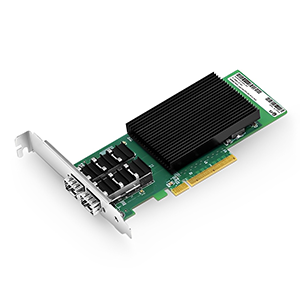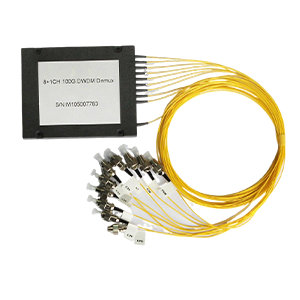Data center networks are facing new development trends. This article will focus on data center network fabric extenders. We first explain what a network fabric extender is and explain its main functions and features. Next, we analyze the challenges facing data center networks and explain how fabric extenders can help solve these problems.
Then, we introduce the basic working mechanism of the extender and analyze its role at the network level. Finally, we list the solutions provided by major manufacturers and explain the key considerations when selecting an extender to provide users with a reference.
What is a data center network fabric extender
A data center network fabric extender is a device used to extend and enhance the data center network architecture. It provides flexible network topology and high-bandwidth communication capabilities by connecting and integrating multiple network components to support the needs of virtualization and cloud services.
A network fabric extender is a key component in a data center network. Its main functions and features are as follows:
1. Expand network capacity and coverage:
- Network fabric extenders can expand network capacity and coverage by adding more ports and connection points on the existing network infrastructure.
- This can meet the growing demand for equipment and traffic and support the continuous expansion of data center scale.
2. Provide flexible connection methods:
- The extender supports multiple types of connections, such as Ethernet, optical fiber, etc., providing more flexible options for connections between devices.
- This flexibility helps to adapt to the needs of different types of equipment and application scenarios.
3. Simplify network architecture and management:
- By deploying extenders at the edge of the network, the core network structure can be kept relatively simple.
- The extender undertakes most of the distributed forwarding and processing functions, simplifies the burden of the core equipment, and improves the manageability of the overall network.
4. Support high availability and redundancy:
- Network fabric extenders usually have high availability features such as dual paths and hot plugging.
- This can improve the reliability and fault tolerance of the entire network system.
In short, the network fabric extender is an indispensable key component in the data center network. It can effectively expand the network capacity and provide flexible and diverse connection methods, thereby supporting the rapid development of the data center.
Application scenarios of data center network fabric extenders
The application scenarios of data center network fabric extenders include large-scale cloud computing platforms, virtualized environments, and high-performance computing clusters. It can support the rapidly growing data traffic and user needs, and optimize the network topology to adapt to the changing load. In addition, the extender is also suitable for multi-tenant environments and disaster recovery solutions, improving the efficiency and reliability of data centers by providing flexible network management and high-bandwidth connections.
1. Challenges faced by data center networks:
Current data center networks face the following key challenges:
- High bandwidth requirements:
- Devices and applications within data centers have increasing demands for network bandwidth.
- Traditional network architectures may have difficulty meeting the transmission requirements of massive data traffic.
- Complex topology:
- There are a large number of servers, storage, and network devices within data centers.
- Traditional three-tier network architectures face challenges in construction and management.
- Low network visibility:
- The internal network layout of the data center is complex, and the visibility of the network status is weak.
- This will increase the difficulty of network troubleshooting and optimization.
- Operation and maintenance management complexity:
- Network operation and maintenance and management of large-scale data centers require a lot of human resources.
- Need to simplify the network architecture and improve manageability.
2. How Fabric Extenders Solve These Problems:
Network fabric extenders can help data center networks meet the above challenges:
- Horizontally expand network capacity:
- Extenders can expand the overall capacity of the network by adding more ports and connection points.
- Meet the growing demand for data traffic.
- Simplify network topology:
- Extenders can transform complex internal networks into a flatter and simpler architecture.
- Reduce the burden on core network devices and improve overall manageability.
- Enhance network visibility:
- Extenders can provide management software with richer network status information.
- It helps to realize the visual management of the entire data center network.
- Improve operation and maintenance efficiency:
- The plug-and-play feature of the extender reduces the complexity of network deployment and configuration.
- Simplifies network operation and maintenance work and improves overall operational efficiency.
In short, the network fabric extender can effectively help the data center network cope with challenges in capacity, complexity, visibility, and operation and maintenance management.
Working principle of data center network fabric extender
The working principle of the data center network fabric extender is based on integrating multiple network devices and connections into a unified network architecture. It connects switches, routers, and storage devices through high-speed data channels to achieve fast data transmission and efficient management. The extender uses intelligent algorithms to dynamically optimize data flows and automatically adjust bandwidth allocation to cope with real-time load changes, thereby improving overall network performance and scalability, and ensuring that data centers can still operate stably under high loads.
The basic working mechanism of the network fabric extender includes the following aspects:
- Virtualization technology:
- The extender uses virtualization technology to abstract physical network ports into multiple logical ports.
- This can greatly expand the number of available ports to meet the needs of network scale expansion.
- Multiplexed transmission:
- The extender uses multiplexing technology to multiplex the data streams of multiple virtual ports to the physical link for transmission.
- By optimizing bandwidth utilization, the utilization efficiency of network resources is improved.
- Network Tunneling:
- The extender can create logical tunnels on the physical network to tunnel the communication between virtual ports.
- Tunneling technology can shield the complexity of the underlying physical network and simplify the upper-layer network management.
- Intelligent Routing and Forwarding:
- The extender has intelligent routing and forwarding functions, which can make the best forwarding decisions based on traffic characteristics.
- This helps improve the overall performance and reliability of the network.
At the network level, the extender plays the following roles:
- Expand network edge capacity:
- Through virtualization and multiplexing technology, the extender can significantly increase the number of available ports.
- Meet the high-speed access requirements of network edge devices.
- Simplify network architecture:
- The tunneling and intelligent forwarding functions of the extender help simplify the topology of the core network.
- Thereby improving the manageability of the entire network system.
- Optimize network performance:
- The intelligent routing and forwarding capabilities of the extender can better optimize network traffic and improve overall performance.
- It also improves the reliability and availability of the network.
In short, network fabric extenders play an important role in network capacity, architecture and performance optimization with technologies such as virtualization, multiplexing, and tunneling.
Choosing the right data center network fabric extender
When choosing the right data center network fabric extender, consider the network scale, bandwidth requirements, and future expansion capabilities. Evaluate device compatibility to ensure seamless connection with existing network infrastructure. At the same time, pay attention to management functions such as automated configuration and monitoring capabilities to simplify network management. In addition, choose extenders with high reliability and redundant design to ensure stability under high load conditions.
1. Network fabric extender solutions from major vendors:
Major network equipment vendors all provide fabric extender solutions for data center networks, including:
- Cisco Nexus 2000 Series:
- Cisco’s standardized fabric extender product line.
- Provides a wide range of interface types and expansion capabilities.
- Juniper QFX5100 Interconnect:
- Juniper’s fabric extender device supports 40/100GbE interfaces.
- Can be integrated with Juniper core switch products.
- Arista 7050X2 Series:
- Arista’s data center fabric extender products.
- Supports high-density 10/25/40/100GbE interfaces.
- H3C CloudEngine Series:
- H3C’s data center fabric extender product line.
- Provides a variety of interface densities and expansion capabilities.
These mainstream manufacturers’ fabric extender products have their own characteristics and can be selected according to specific needs.
2. Key factors when choosing a fabric extender:
When choosing a suitable network fabric extender, you need to focus on the following key factors:
- Bandwidth support:
- Choose the appropriate interface rate and density based on current and future bandwidth requirements.
- Scalability:
- Evaluate the maximum number of ports on the extender to ensure that it can support the growth of the network scale.
- Functional features:
- Understand the virtualization, tunneling, intelligent forwarding and other functional features of the extender to meet network needs.
- Reliability and availability:
- Choose an extender product with high availability design to ensure network stability.
- Compatibility and integration:
- Ensure that the extender can be well integrated with existing network equipment to avoid compatibility issues.
- Deployment and management convenience:
- Consider the ease of deployment and management friendliness of the extender to improve operation and maintenance efficiency.
- Cost budget:
- Choose based on budget and long-term total cost of ownership (TCO).
Taking the above factors into consideration, choosing the right fabric extender product will help build a high-performance, scalable data center network.
Summary
Data center network fabric extenders are key technologies for building flexible and efficient network architectures. Our company is a well-known network infrastructure supplier in the industry, and has long focused on the research and development and application of data center solutions. We provide a full range of network fabric extender devices that can meet the needs of data center networks with different requirements.
Our products use industry-leading technical solutions and have achieved excellent levels in forwarding performance, reliability and manageability. At the same time, our team of engineers will provide you with professional demand analysis and solution design services to ensure that the deployed network fabric extender solution can meet your actual needs to the greatest extent. Contact us now to learn more.Rest.
Data Center Network Fabric Extender FAQ
A fabric extender is a device that extends the capabilities of a data center network fabric, providing connectivity and resource pooling.
Fabric extenders enhance scalability, simplify management, and increase network flexibility by extending connections to servers and storage.
Unlike traditional switches, fabric extenders operate as remote devices managed by a parent switch, allowing for centralized management and configuration.
They offer improved performance, reduced latency, simplified cabling, and efficient use of resources.
Yes, fabric extenders can support various types of traffic, including Ethernet, IP, and Fibre Channel.
They enable better resource utilization and provide the necessary connectivity for virtual machines and cloud environments.
Most fabric extenders are designed to integrate with existing network switches and equipment, making them compatible with many setups.
Management is typically done through the parent switch interface, allowing for streamlined configuration and monitoring.
Major vendors include Cisco, Arista Networks, and Juniper Networks, among others.
Consider scalability, compatibility with existing infrastructure, management capabilities, and your specific network requirements.



